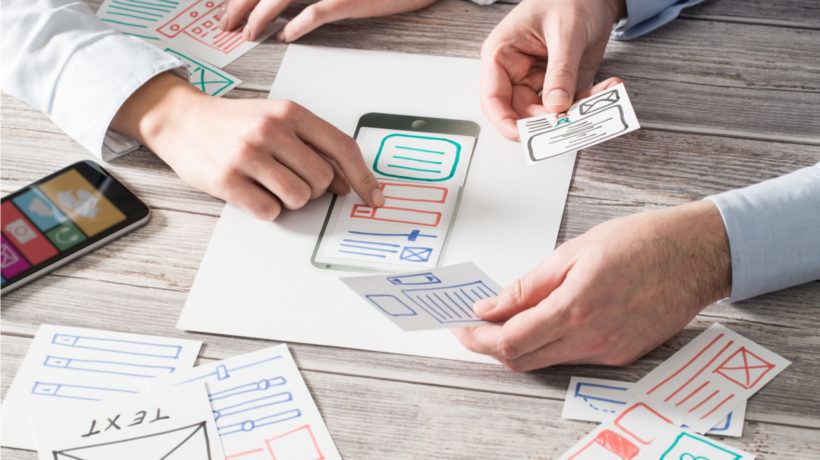Which User Interface Design Hacks Τo Use And Create Α Dynamic Experience
It makes sure that every step a user needs to take is laid out unambiguously and fed to them on a silver spoon to avoid any bafflement. Therefore, when it comes to creating a user-friendly User Interface (UI), designers prioritize simplicity as a simple UI is clear, intuitive, and helpful. It can solve users’ problems and address their pain points in an effective way while saving time and efforts.
If you are thinking of creating a great User Interface for your next website or mobile application, here are a few UI design hacks that your users will absolutely fall head over heels in love with.
1. Purposeful Visual Hierarchy
A well-designed User Interface effectively relays information to the users while offering an effortless and pleasant experience. Remember that in an era of information deluge, users don’t bother to peruse through line after line of copious text; they only skim over the top. So, your User Interface should be organized in a meaningful manner that is based on a clear and consistent model that users can relate to at a glance.
Nielsen Norman Group published an eye-tracking study of online readers, which provides designers with a clear understanding of how users scan their website. The study suggests that users glance over headlines, summaries, and captions first, proceeded by shifting their attention to graphical elements on the page.
Here are a few common models of how people read through a design.

In the Z pattern layout, also known as the reverse-s-pattern, readers start construing the information from top left to top right and then diagonally to the bottom right. This pattern is good for simple designs that depict a storytelling effect.

The Zig-Zag pattern is a series of Z-movements in which readers move to the right and then a little down and back to the left. This pattern is observed when users are subjected to hefty blocks of text.

The F-pattern, first suggested by Jakob Nielsen, is observed when a readers’ eye starts moving from the top left to the top right and then back to the left edge.
Considering these models in mind, make sure that your navigation and the most important data should be placed at the focal points of the highest visibility to draw users’ attention to your product, service or CTA. A well-arranged and careful visual hierarchy is the key to creating an out-of-the-box UI that makes it easier for readers to scan the page while saving their time and energy.
2. Strategically Create Your Navigation
Believe it or not, navigation is the most important and strategic area that users see before scrolling through the web page. If truth be told, navigation helps users connect to the key points of interaction. Your website header should include all the basic elements of your brand such as the logo design, brand name, company’s slogan, links to basic categories of website content and social media accounts, contact information, search box, subscription or download button. Carefully decide which option matters the most to your target audience and business goals and then strategically place the information on your web page header.
3. Focus Οn Visual Branding
Branding is the set of visual elements such as the logo, typography, and brand colors that are used to promote your products and services. When it comes to creating a User Interface for websites and mobile apps, designers should create a set of visual elements such as the logo, brand colors, typography, and other graphic elements to promote the brand, products, and services.
In a nutshell, visual branding will serve as a powerful tool for supporting your brand recognizability and creating a sense of trust. Strong branding immediately informs users who you are, what you do and what you offer, saving their time, energy, and efforts.
4. Use Strong CTAs
A call to action button is an interactive element of any User Interface, be it web or mobile. The major goal of CTAs is to encourage people to take some desired action. It is indeed a challenge for UI designers to create a CTA button that users cannot resist clicking and which serves every device’s screen. So, it is important to make sure of the consistency from small to large screens.
When creating a CTA button for UI design, judiciously consider the shape of the button. Use solid shapes to make it more conspicuous and hard to overlook. In addition, size and padding make it easier for users to interact with the button. Labeling and colors also matter most to indicate the function of each button while helping users navigate and understand the action more clearly.
5. Use Visually Appealing Images
An image is worth a thousand words. A good UI that contains visually and emotionally appealing images can appeal to the basal instincts of consumers and effectively communicate your brand message. Images not only serve to set the right tone and mood, they also depict the core benefits of your products.
Deciding which image is appropriate for your website or app is important, as in most cases, each brand has different goals and diverse audiences. Getting people’s attention with highly attractive and engaging images, clear illustrations, and hero images can meet the goals of the page.
Over To You
The above-mentioned elements are very important to design a seamless and user-friendly User Interface. If you are a User Interface designer working in a web design agency, you need to pay diligent attention to all these useful UI design hacks to come up with a design that solves users’ problems and offers a pleasant experience.









